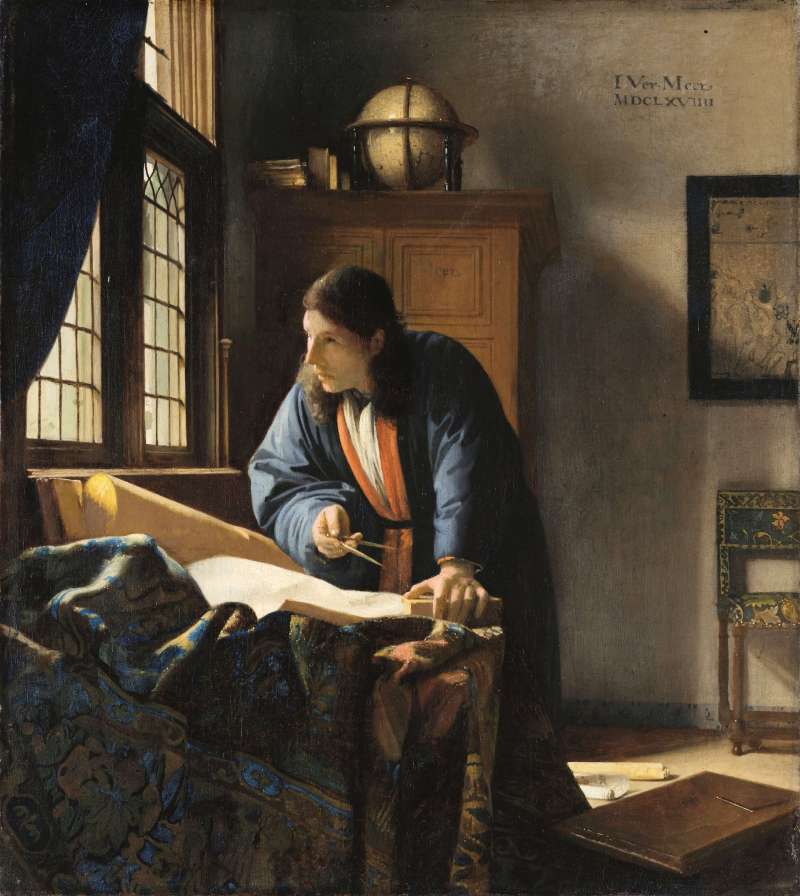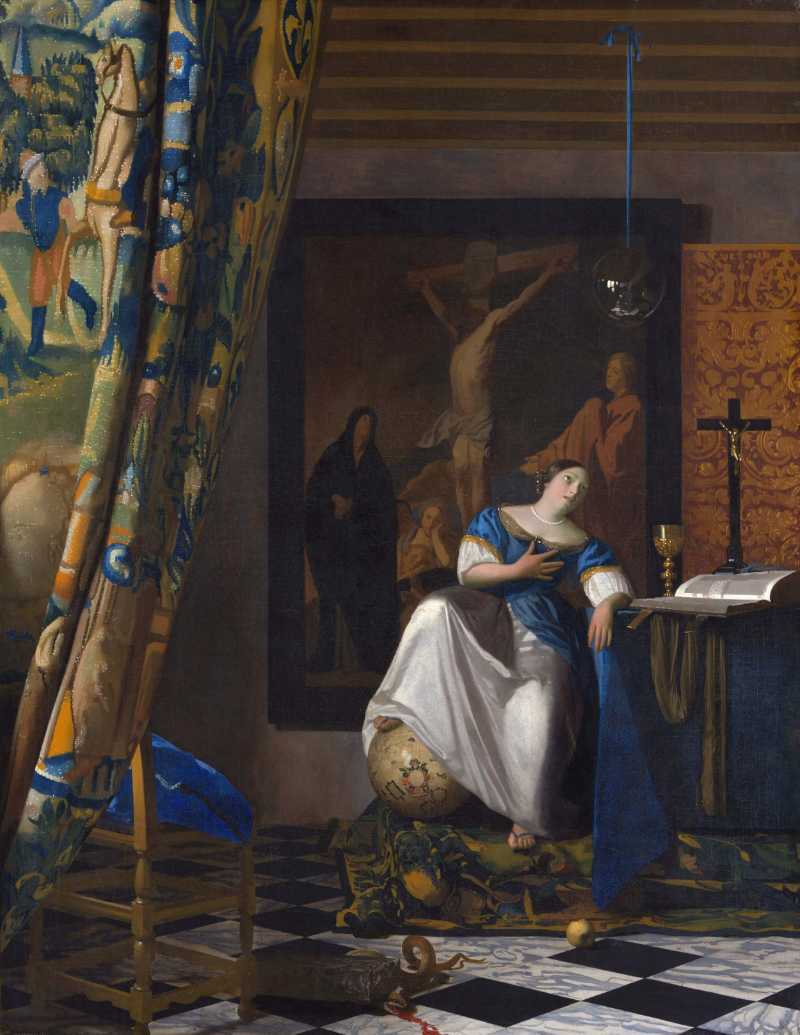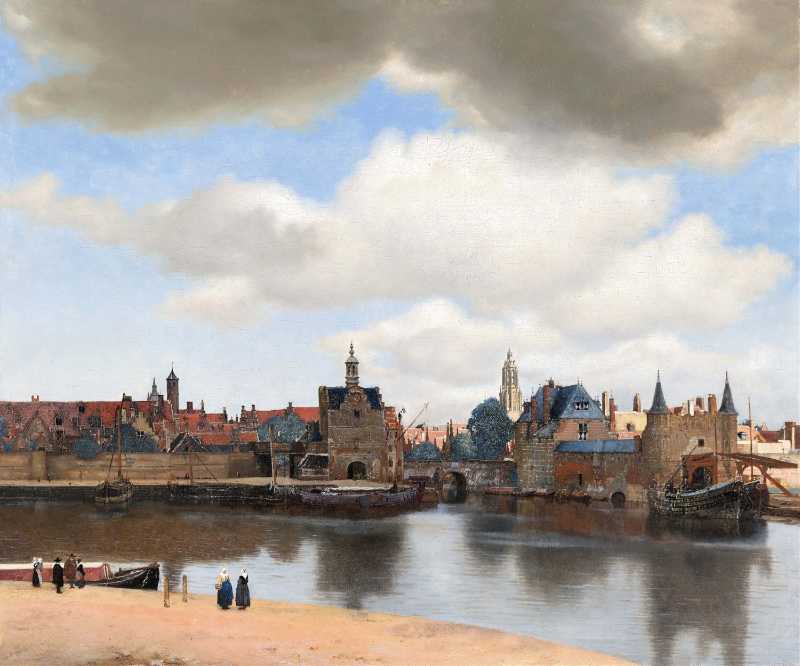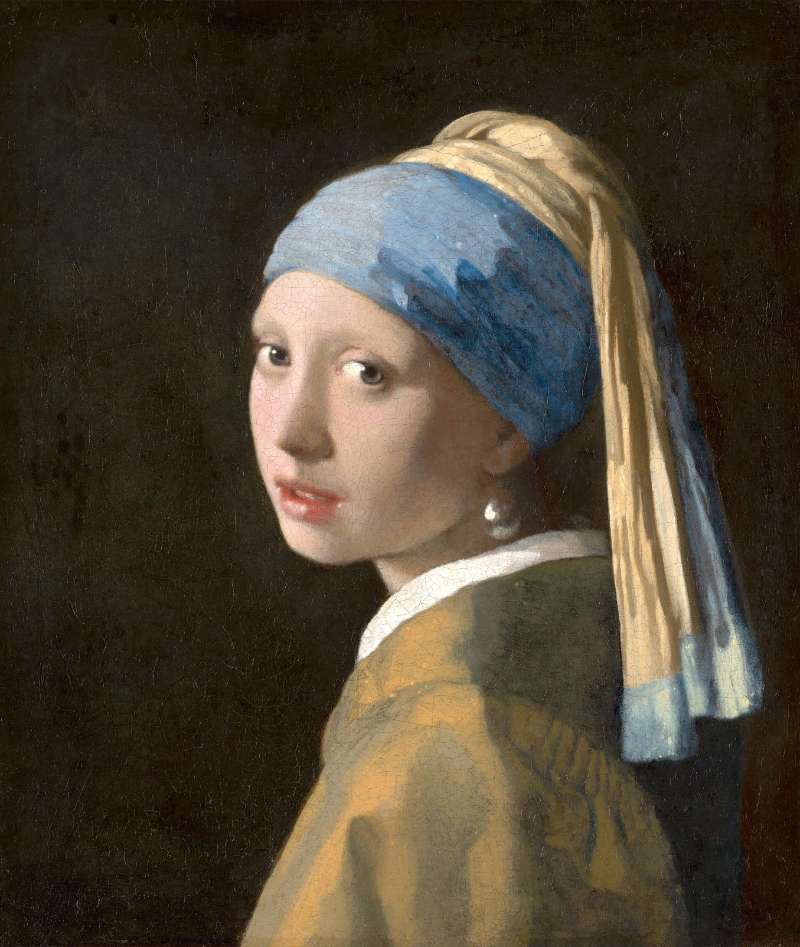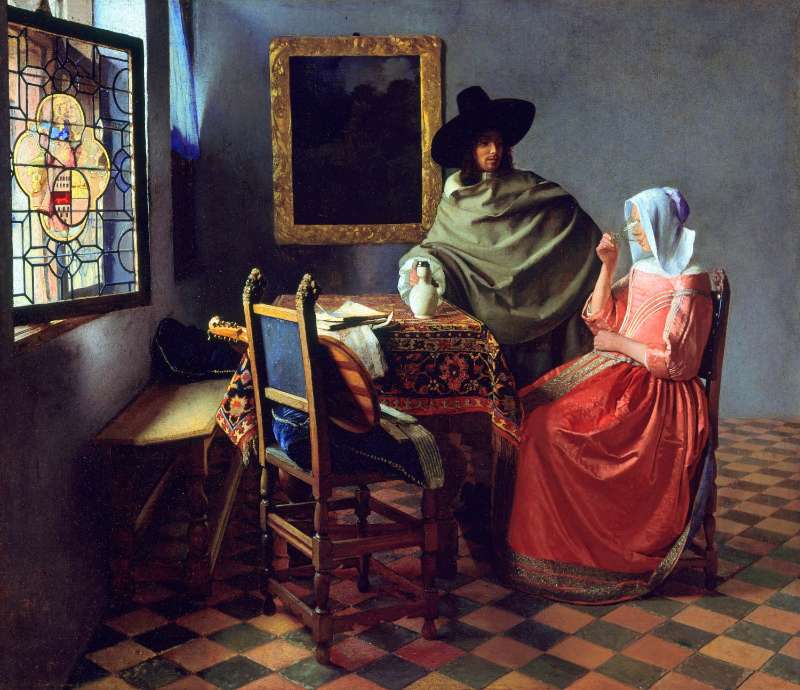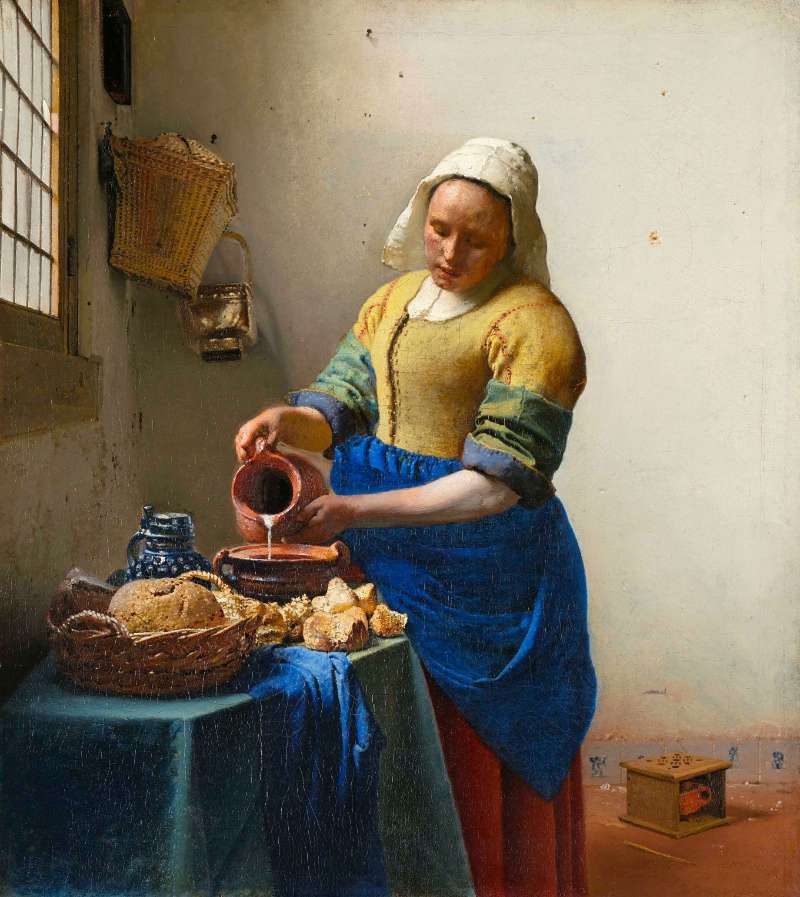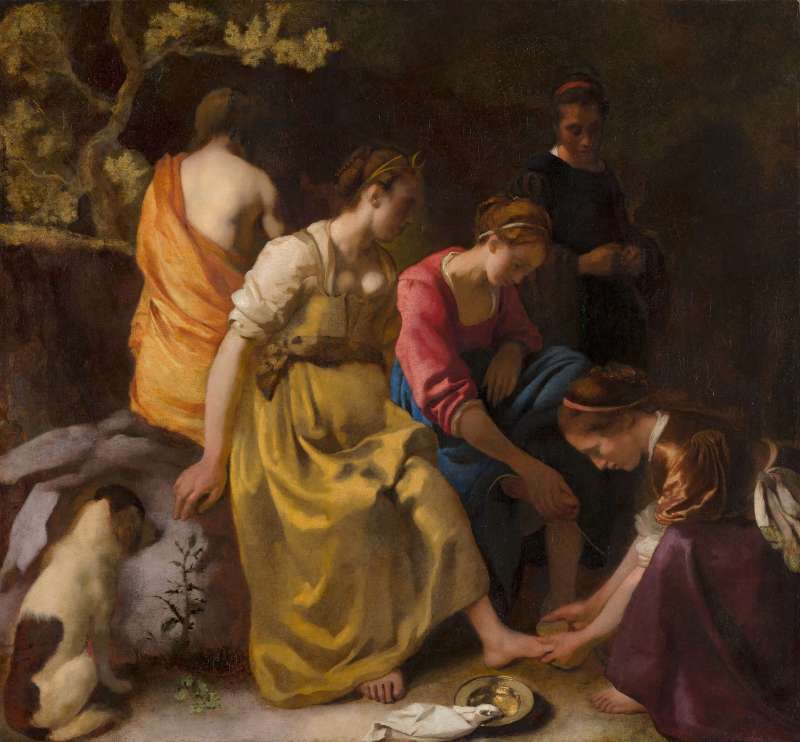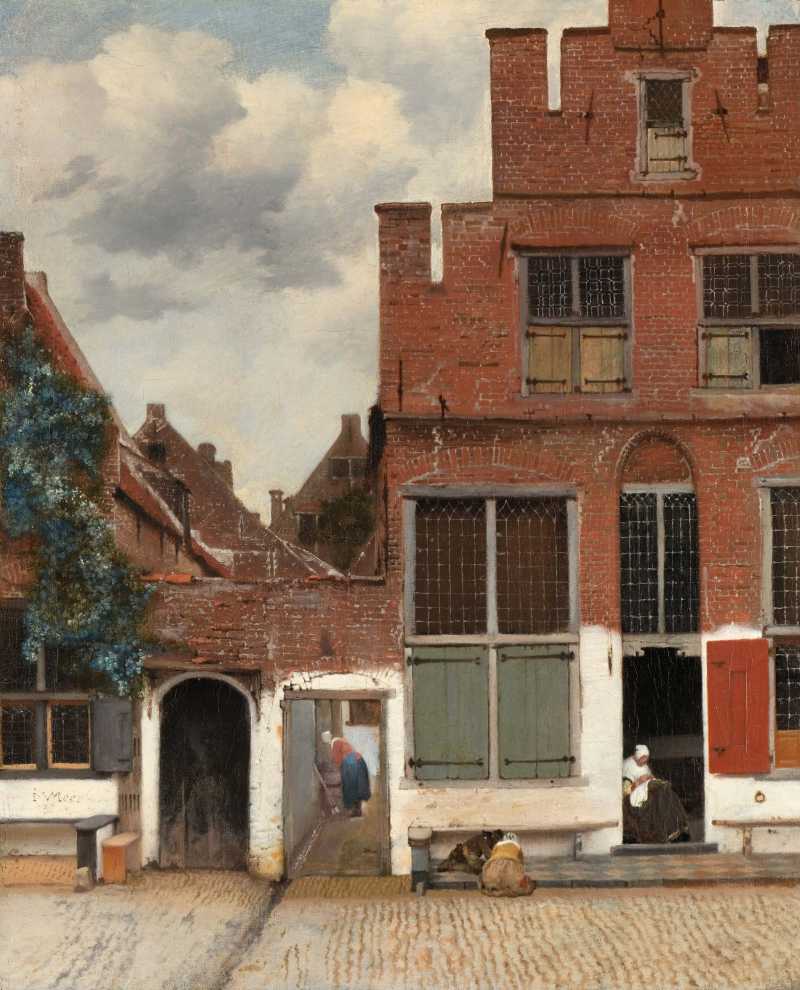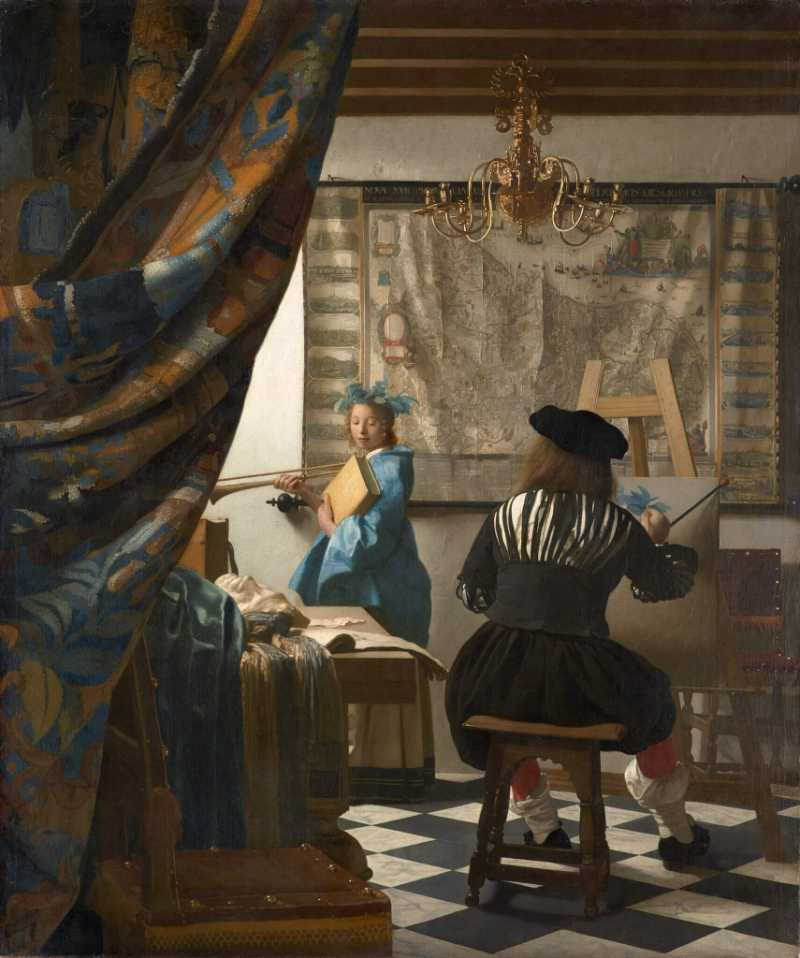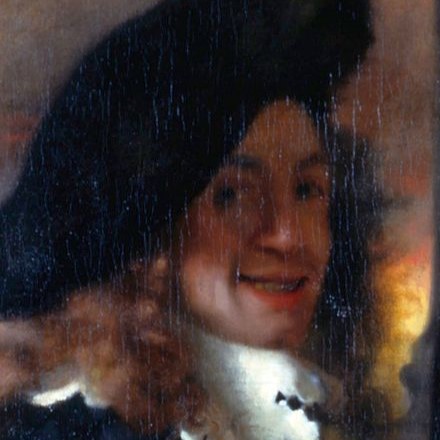
Johannes Vermeer
Johannes Vermeer, also known as Jan Vermeer, was a Dutch painter who specialized in scenes of middle-class domestic life. He is considered one of the greatest painters of the Dutch Golden Age. During his lifetime, he was a fairly successful provincial genre painter, with a reputation in Delft and The Hague. He produced relatively few paintings and made his living primarily as an art dealer. He was not wealthy; when he died, his wife was in debt.
Vermeer worked slowly, very carefully, and often used very expensive pigments. He was known for his clever use of light in his works. "Almost all of his paintings", Hans Koningsberg wrote, "seem to be set in two small rooms in his Delft house; they show the same furniture and decorations, but arranged in different ways, and they often depict the same people, mostly women."
The modest reputation he enjoyed during his lifetime faded into obscurity after his death. Arnold Houbraken's primary source on 17th-century Dutch painting (The Great Theatre of Dutch Painters and Women Artists, published in 1718) barely mentions him, and as a result, he appears absent from surveys of Dutch art for nearly two centuries. Vermeer was rediscovered in the 19th century by Gustav Friedrich Waagen and Théophile Thoré-Bürger, who published a treatise attributing 66 paintings to him, although only 34 are generally considered to be his work today. From that point on, Vermeer's fame grew.
